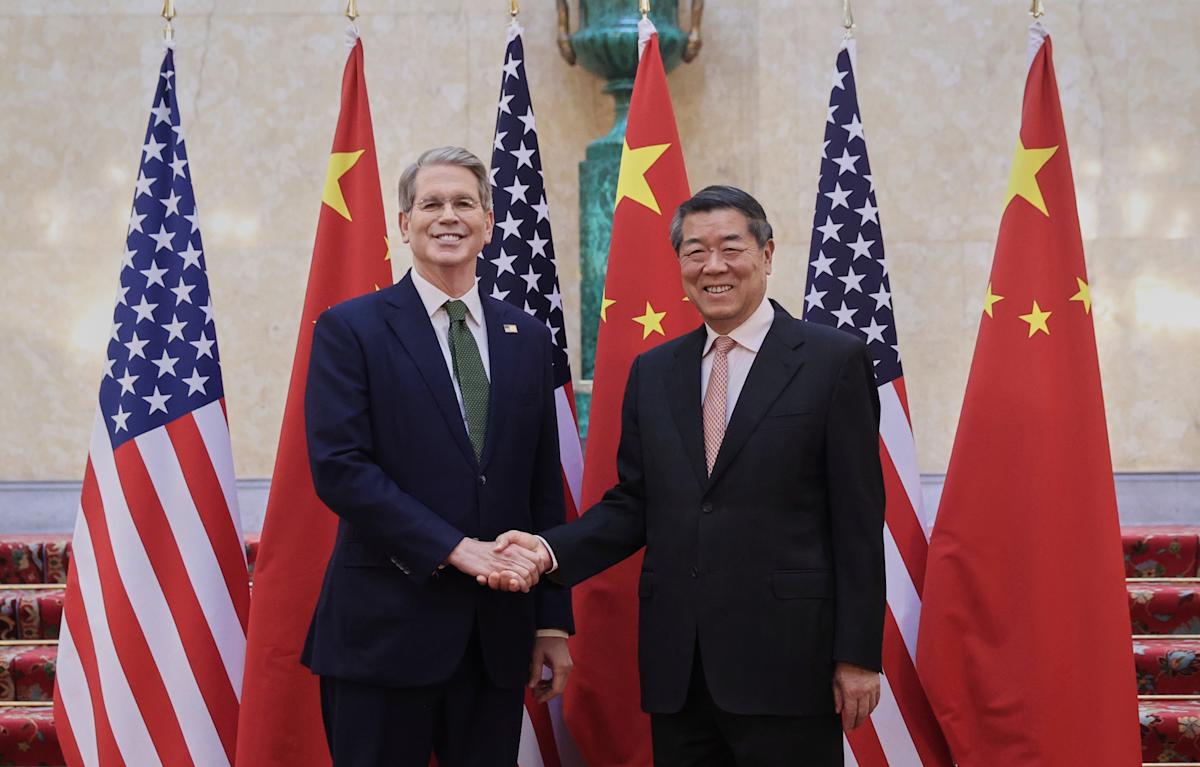Tariffs and TikTok to dominate another round of US-China trade talks starting next week
Treasury Secretary Scott Bessent and Chinese Vice Premier He Lifeng will meet early next week for another round of US-China talks as both sides search for a path forward on a TikTok ban and a November tariff deadline.
The meeting in Madrid will cover “trade issues of mutual interest,” including the fate of TikTok in the US, as well as national security issues like money laundering networks, according to the Treasury Department.
The Chinese Ministry of Commerce also confirmed the meeting, adding that talks will occur from Sept. 14-17 and that both “U.S. unilateral tariff measures” as well as TikTok would be on the agenda.
The talks come as deadlines on both the tariff and TikTok fronts have already been delayed multiple times — but may come to a head soon.
On tariffs, it was last month that President Trump granted another 90-day tariff delay to again push off a potential return to triple digit duties between the world’s two largest economics until November.
Meanwhile the TikTok deadline — when a US law says TikTok’s China-based parent company ByteDance needs to sell the app or see it banned in the US — is set to expire on Sept. 17 even as Trump has already said he is likely to extend it.
Bessent will be in Europe from Sept. 12 to 18 with stops in both Spain and the United Kingdom.
The hope from markets around these talks is likely to hinge on any signs of easing around these two specific issues with few expectations, as Capital Economics noted in an analysis this week, of any “US-China grand bargain” in the coming months.
The analysis adds that the larger trends in evidence are in the direction of a global economy that is in the process of coalescing into two blocs — one orbiting around the US and another around China.
The current tariff deadline of Nov. 10 is when a snapback to triple-digit tariffs — which were briefly in place at the beginning of Trump’s term — could return.
Current duties between the two nations are 30% on Chinese imports and 10% on American goods — with sector-specific tariffs on goods like steel and some medical supplies currently pushing the effective tariff rate between the two countries higher.
The latest deadline also comes amid a new focus from Trump on pressuring China for its ongoing purchases of Russian oil.
The White House has already imposed 25% tariffs on some goods from India over the issue of oil purchases, with a new pressure campaign unveiled Friday to push G-7 nations to consider tariffs as high as 100% on both India and China over the issue.



Leave a Comment
Your email address will not be published. Required fields are marked *